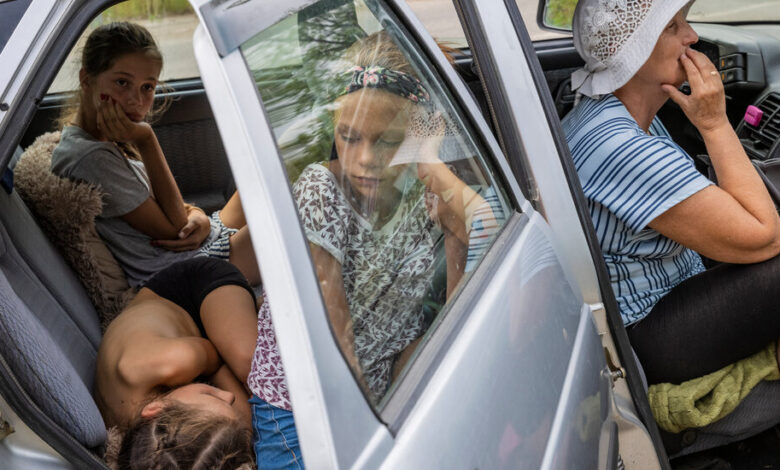The focus of fighting shifts to Ukraine’s south.

ZAPORIZHZHIA, Ukraine — The main front in Russia’s military onslaught on Ukraine appears to have shifted dangerously to the south of the country, risking a catastrophe at Europe’s largest nuclear power plant and setting up a possible make-or-break struggle for an important regional capital seized by Russia at the start of its invasion.
Initially focused on the north around the capital, Kyiv, and then turning into a brutal slugfest in the east involving months of artillery duels that cost thousands of lives on both sides, the war has entered a new and, each side hopes, decisive phase.
With fighting raging around the Zaporizhzhia nuclear station and the Russian-occupied city of Kherson, around 60 miles down the Dnipro River from the nuclear plant, the south is now where both Russia and Ukraine are focusing their firepower — and their hopes of avoiding a stalemate that could drag on for years.
Over the weekend, Russia used territory around the nuclear power station, which it seized from Ukraine in March, as a staging ground for attacks on Ukrainian positions. It unleashed a barrage of howitzer fire on the nearby Ukrainian-held town of Nikopol, local officials said.
The intensifying battles around the power plant — the first active nuclear plant in a combat zone — have sent residents in the area fleeing and stirred alarm of a radiation risk far beyond Ukraine.
At the same time, Russian forces in Kherson face encirclement by the Ukrainian military. The precarious position of the Russian troops, who were largely cut off from their main source of supplies after Ukraine wrecked the last of four bridges across the Dnipro, has led to speculation about their fate.
Some reports on Saturday said Russian commanders had already retreated from the city. A regional legislator, Serhiy Khlan, told Ukrainian television on Sunday that Russia was moving its Kherson command center across the Dnipro to more secure territory on the eastern bank.
Senior Ukrainian military sources, however, said they had seen no evidence that Russian commanders were retreating. Analysts warned that Ukrainian politicians have an interest in exaggerating Russia’s troubles to rally morale and demoralize Russian troops.
But Russian forces in Kherson clearly face difficulties now that their supply lines have been compromised. And Mr. Khlan said the only way they could now reach territory securely held by Russia on the east side of the Dnipro, was to use pontoon bridges or to cross by foot, without their equipment, across badly damaged bridges.
An all-out offensive on Kherson, long threatened by Ukraine but so far limited to attacks on nearby villages and warnings to Russian troops stationed there, has made Moscow particularly eager to hang on to the Zaporizhzhia Nuclear Plant, up the Dnipro River to the northeast.
Its objective is to pin down Ukrainian troops and prevent them from joining any battle for Kherson, the first major city seized by Russia at the start of the war. Shells fired from the direction of the nuclear facility have streaked into a small nearby town held by Ukraine across a reservoir on the Dnipro.
In a Saturday night address to his country, the Ukrainian president, Volodymyr Zelensky, accused Moscow of “nuclear blackmail” and warned Russian soldiers at the Zaporizhzhia plant that they had become “a special target” for Ukraine’s special services and military.
But the Ukrainian military has said it has limited options. It worries that if its forces fire back at the Russians, they might hit the sprawling Zaporizhzhia facility.
